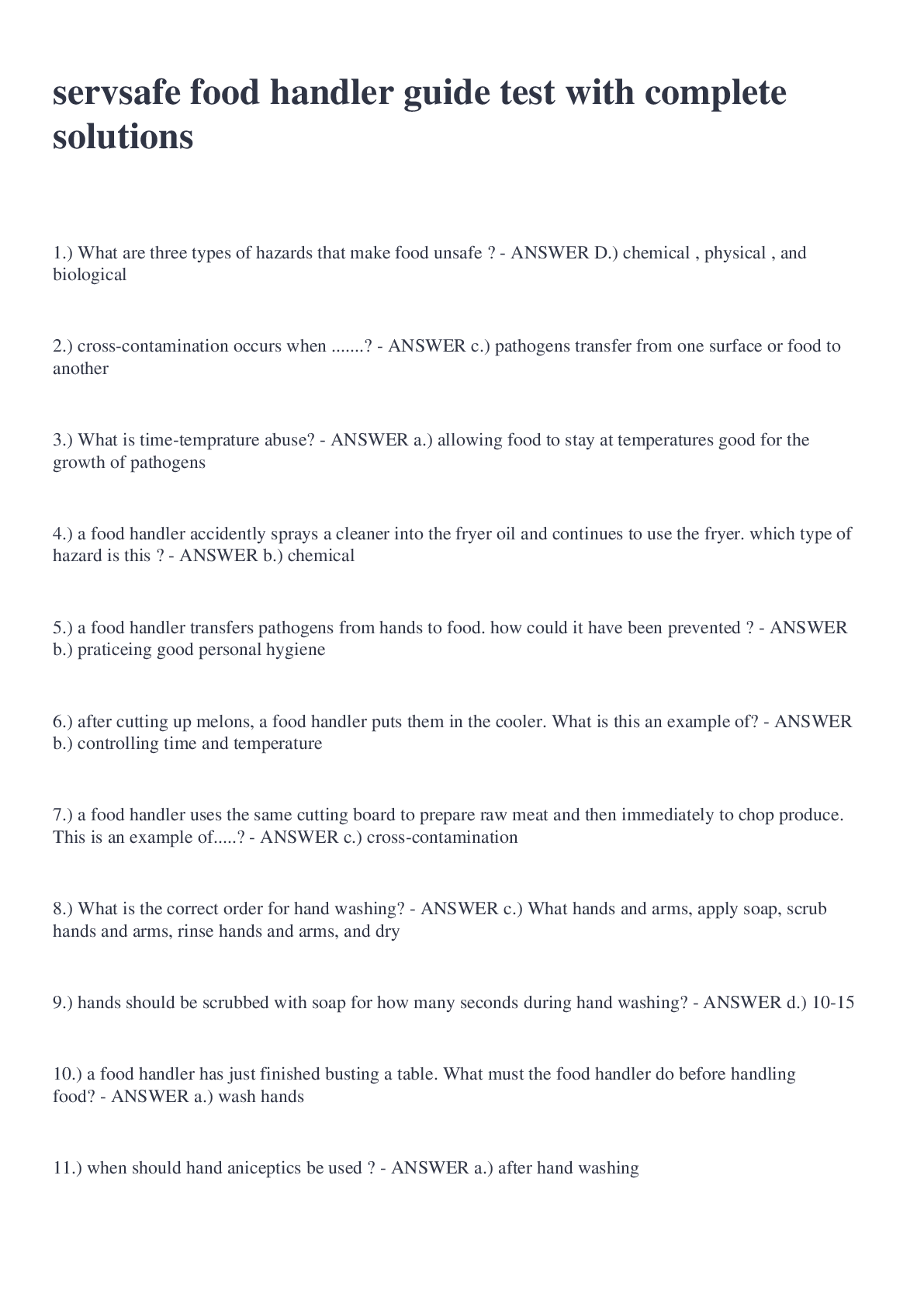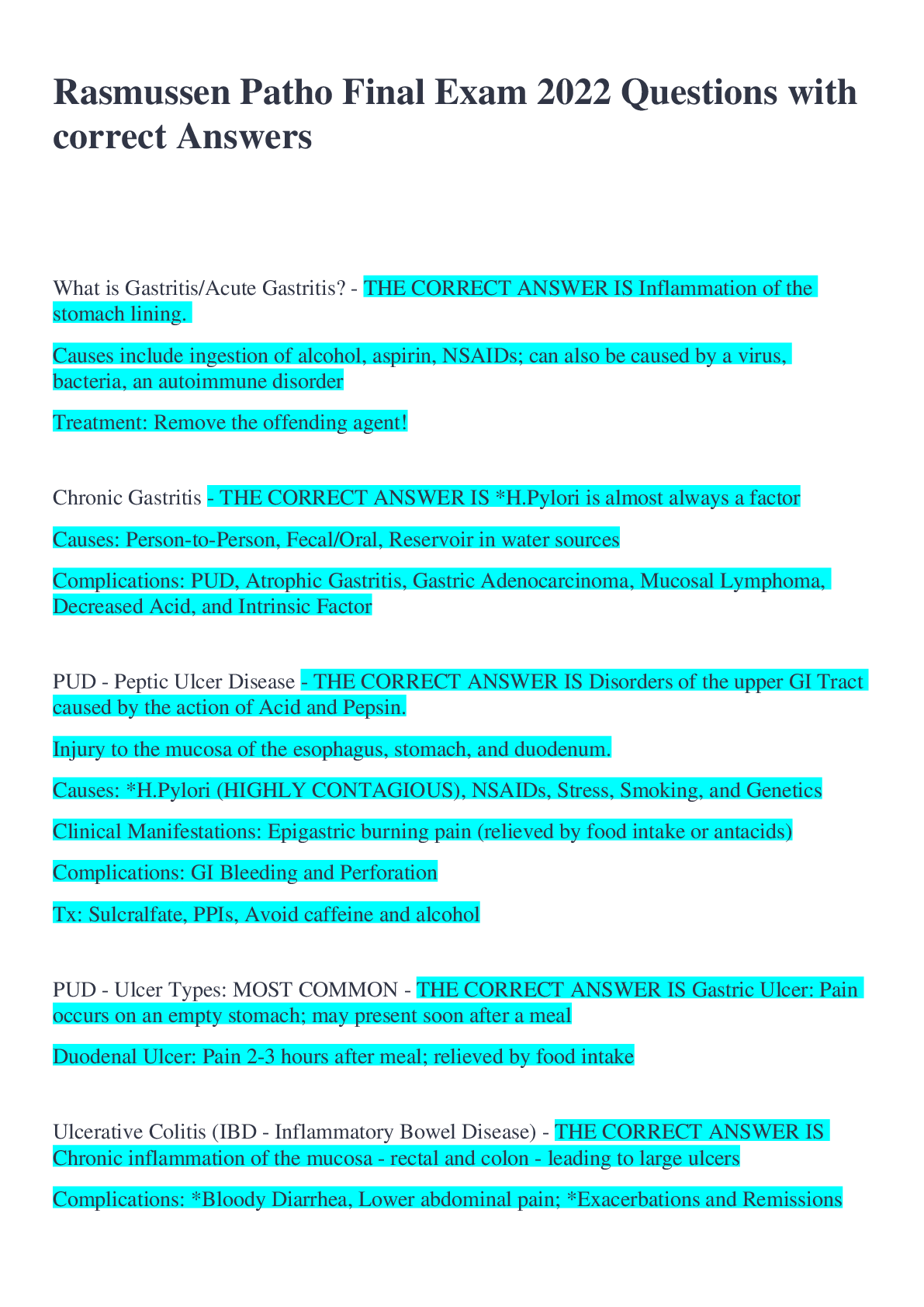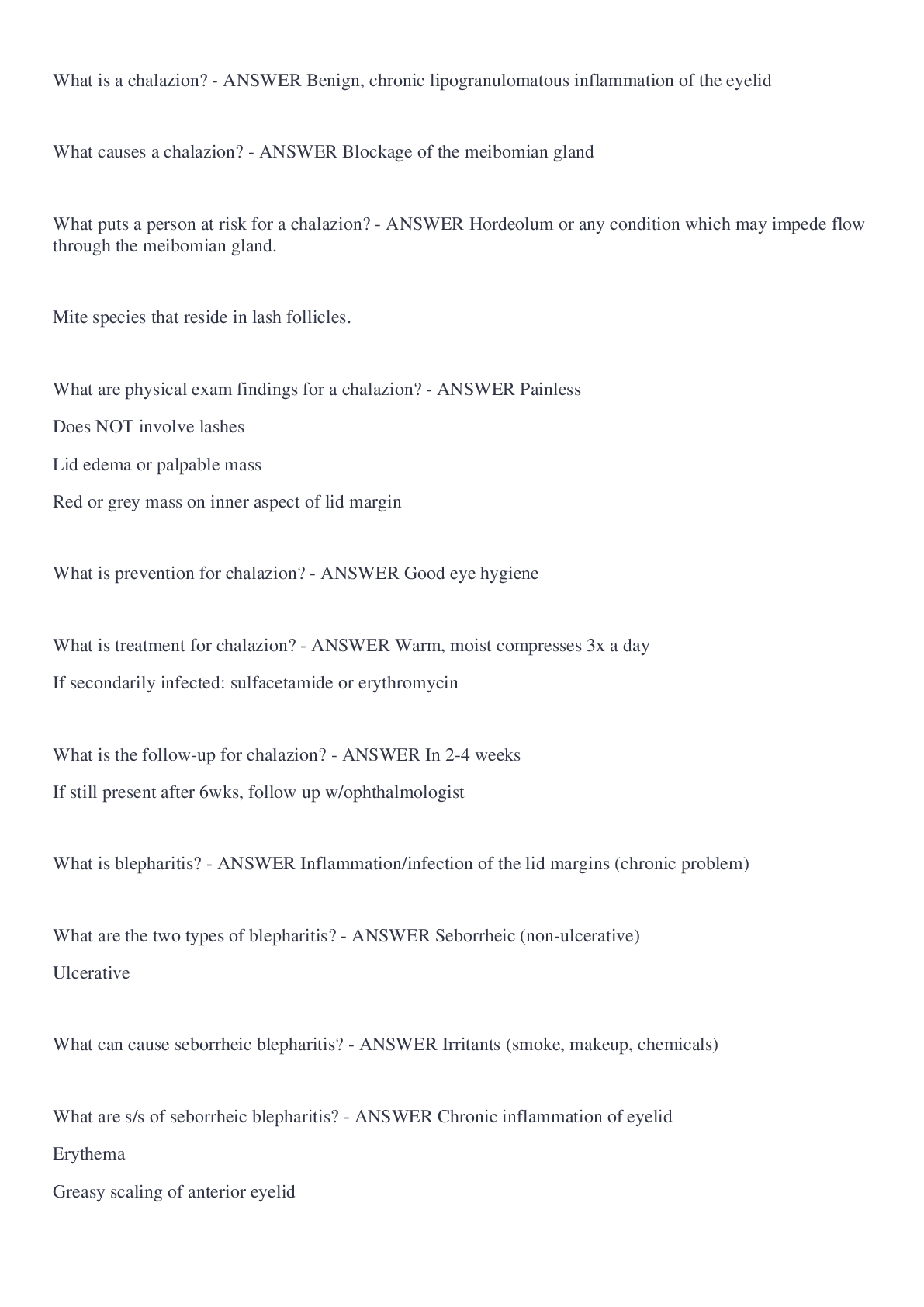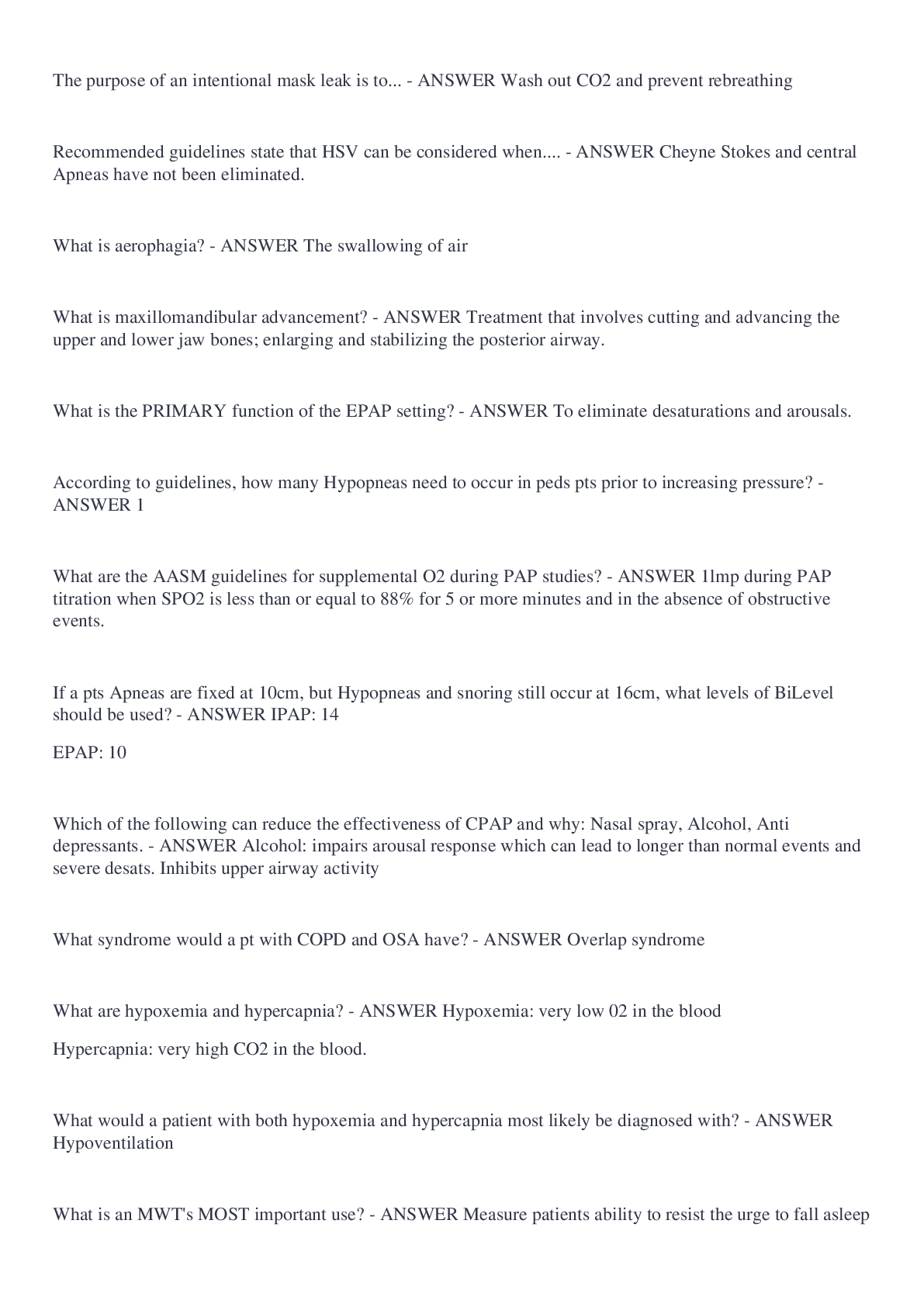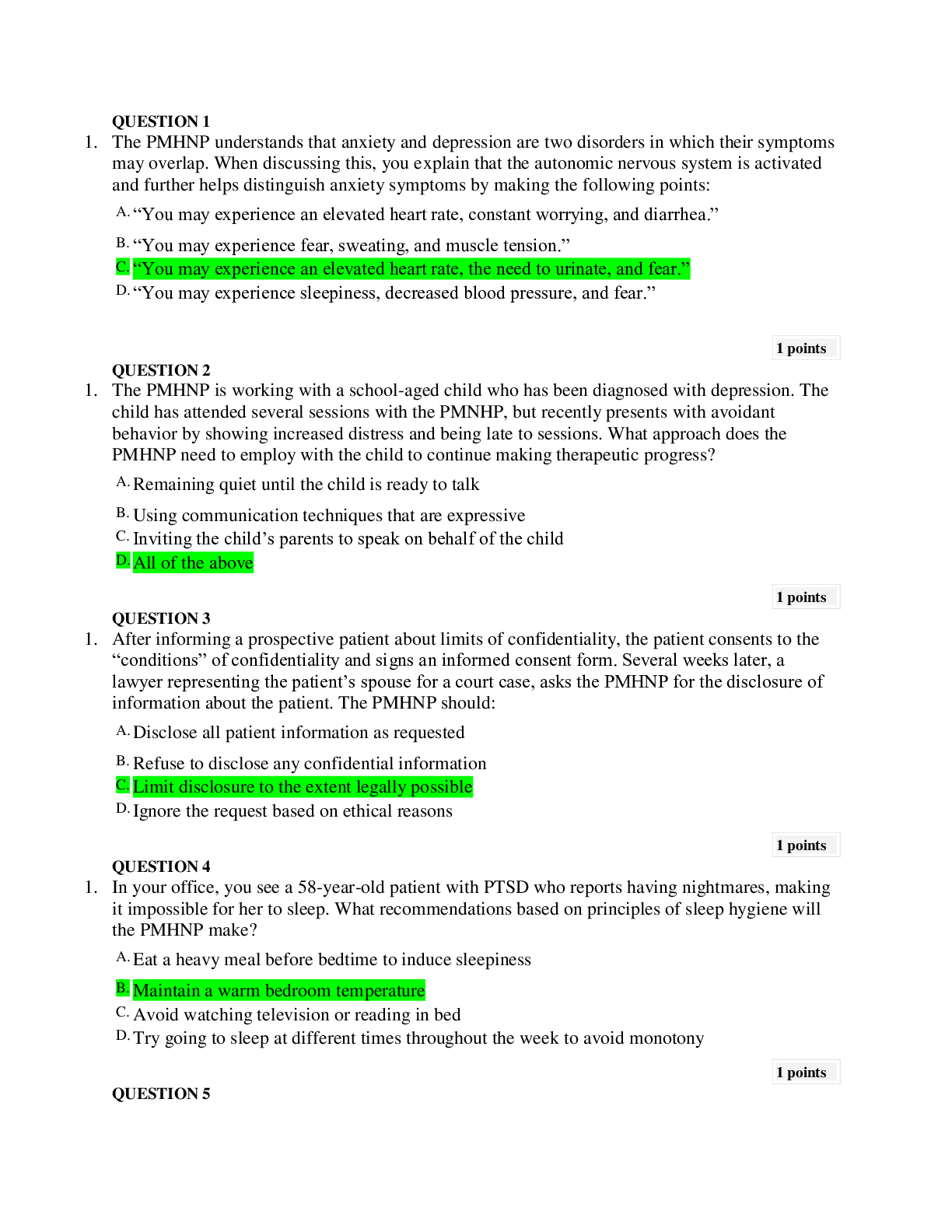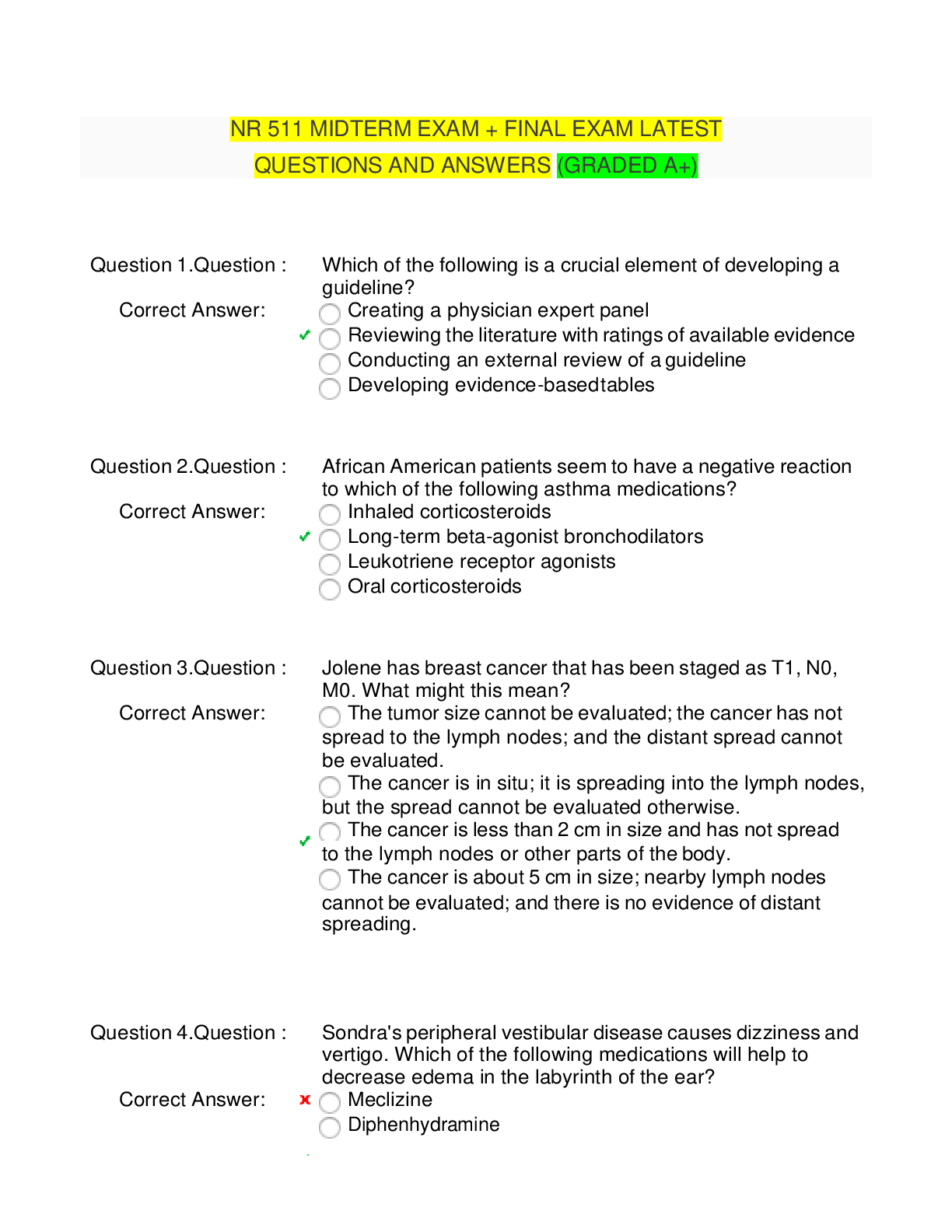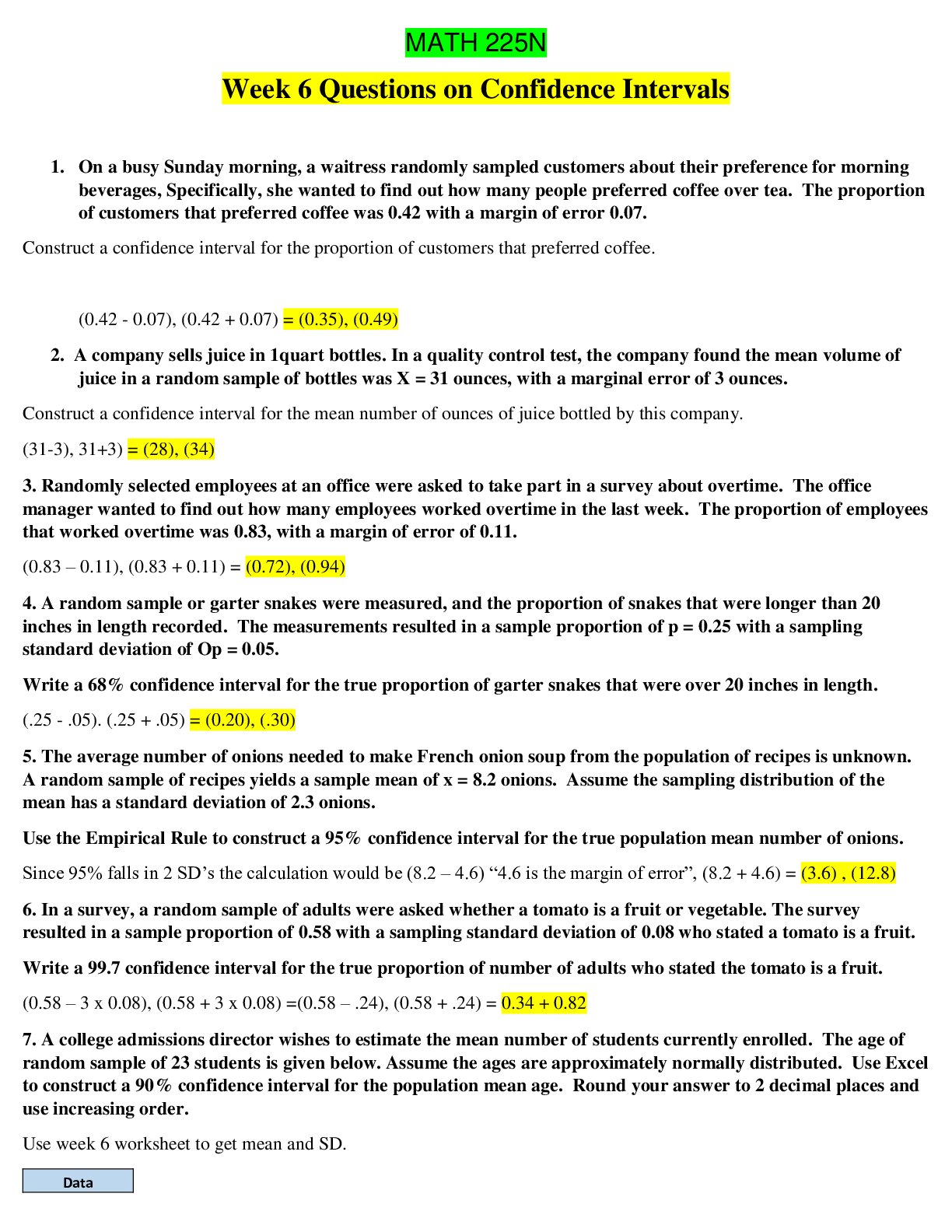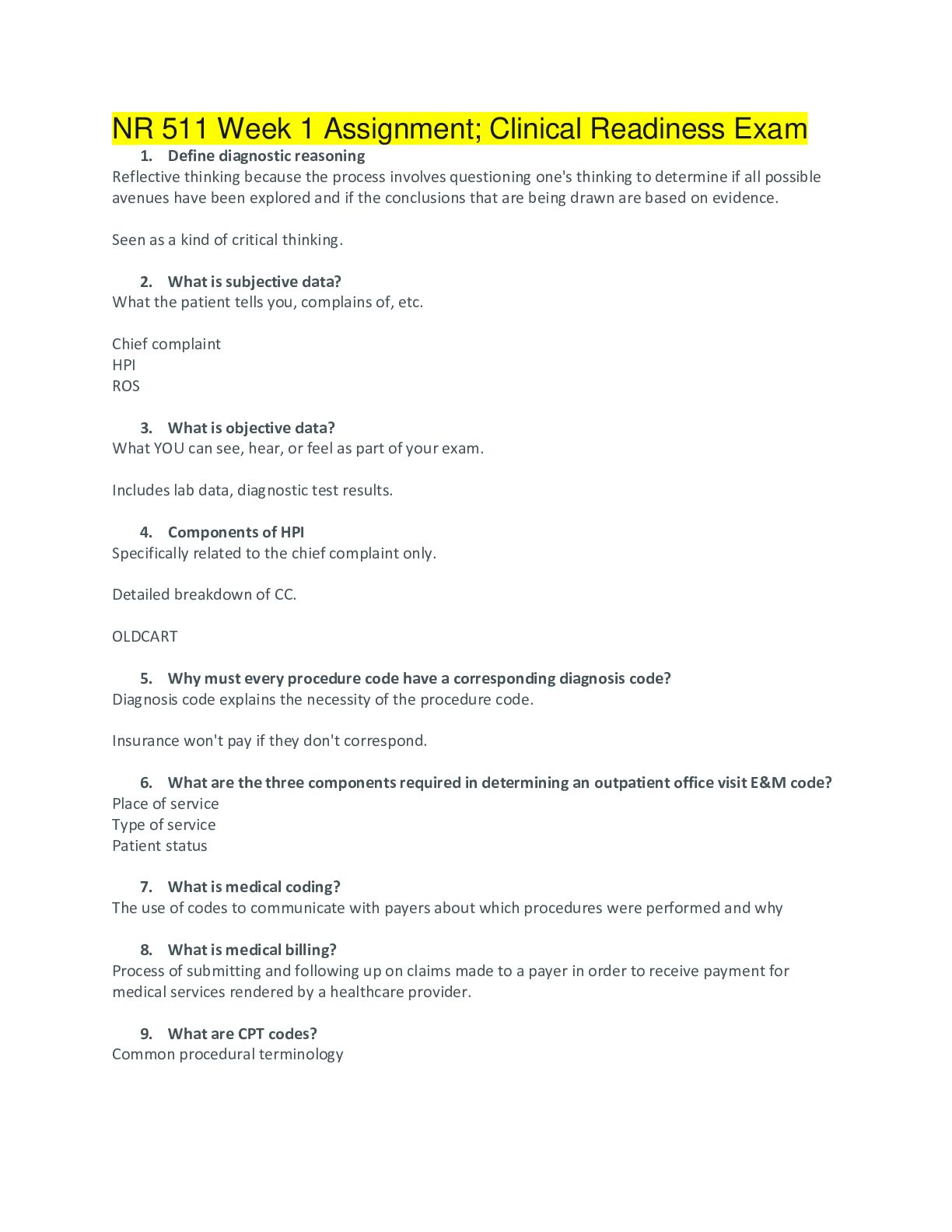Health Care > EXAM > CEN PRACTICE Questions and Answers (All)
CEN PRACTICE Questions and Answers
Document Content and Description Below
Which of the following infection control measures is indicated in the patient with an active methicillin resistant staphylococcus aureus wound infection? A. Droplet precautions B. Contact preacuti... ons C. Protective isolation D. Airborne precautions - ANSWER B. Contact precautions Rationale: CDC recommends contact precautions for patients with active MRSA infection. A patient with a hand wound caused by a high-pressure paint gun is awaiting surgical wound exploration. Preoperatively, the emergency nurse will monitor the patient for the development of A. Lactic acidosis B. Compartment syndrome C. Tetanus infection D. Muscle contracture - ANSWER B. Compartment syndrome Rationale: High-pressure injection injuries occur when a device (e.g., a paint or grease gun) injects the foreign substance into a body. This injury most commonly occurs to the dominant hand or index finger of the injection gun operator. Emergency care includes splinting the injury, obtaining radiographs, administering parenteral analgesics and broad-spectrum ABX, ensuring appropriate tetanus prophylaxis, and elevating the injury. High-pressure injection injuries are a surgical emergency requiring thorough cleansing and immediate decompression to prevent compartment syndrome and tissue necrosis. Hydrocarbon-based substances (e.g., fuel, paint thinners, organic solvents) cause the most severe inflammatory response and are associated with the highest incidence of subsequence amputations. Which of the following findings in a 20-yr-old burn patient indicates the need for burn center referral? A. 8% partial thickness burns to the anterior chest B. Partial thickness burns on the anterior right thigh C. 2% Full-thickness burns in the left knee area D. Superficial circumferential burns of the forearms - ANSWER C. 2% Full thickness burns in the left knee area Rationale: According to the American Burn Association, patients with burns that overlay major joints should be referred to a burn center. A 5-year-old presents with dilated pupils, tachycardia, hot flushed skin, agitation, diminished bowel sounds, urinary retention, and hallucinations after ingesting several tiotropium (Spiriva) inhalation powder capsules. These findings suggest A. Neurogenic shock B. Diabetic ketoacidosis C. Anticholinergic crisis D. Beta-blocker overdose - ANSWER C. Anticholinergic crisis Rationale: Symptoms of anticholinergic exposure can be recalled using the mnemonic "red as a beet, dry as a bone, blind as a bat, mad as a hatter, and hotter than Hades." Treatment is largely symptomatic and supportive. After spraying pesticides all day, a farmhand walks into the ED complaining of diaphoresis, productive cough, nausea, vomiting, and diarrhea. The priority intervention is A. Intravenous cannulation B. O2 Supplementation C. Antidote administration D. Skin decontamination - ANSWER D. Skin decontamination The patient's presentation and recent history suggest organophosphate or cabamate poisoning. These substances are found in industrial insecticides used on farms, as well as in home pesticides (bug spray). Toxicity causes a cholinergic crisis resulting in stimulation and hypersecretion of body fluids. Findings in the patient with a cholinergic toxicity are MUDDLE. Miosis (constriction of pupils), Urination (increase in urination), Diaphoresis, Defecation, Lacrimation, Excitement. As well as SLUDGE: Salivation, Lacrimation, Urination, Defecation, GI upset, and Emesis. Death occurs related to respiratory occurs r/t respiratory failure caused by respiratory muscle paralysis nd increased secretions. In the walking and talking patient, the priority intervention is to decontaminate the patient to avoid cross-contamination of medical caregivers and equipment. Antidote administration-intravenous atropine and pralidoxime (2-PAM; Protopam)-will likely be required. A patient who grasped a live elctrical wire is admitted to the ED. The entire palmar surface of both hands is charred and dry. Anticipating fluid needs for this patient, the nurse knows A. to apply the Parkland burn fluid calculation formula B. these palm burns represent 1% of body surface area (BSA) C. BSA calculations do not predict electrical burn fluid needs D. to use the Consensus burn fluid calculation formula - ANSWER C. BSA calculations do not predict electrical burn fluid needs. Rationale: Most electrical burn damage is internal, rather than dermal, BSA-based fluid calculations do not predict fluid needs in the electrically-injury patient. In a patient with acute onset gastrointestinal complaints, which items in the patient's history would suggest the culprit is food poisoning rather than another etiology? The presence of diarrhea and A. intermittent vomiting B. dilated pupils C. right lower quadrant pain D. bloody stools - ANSWER A. Intermittent vomiting Rationale: Diarrhea is a non-specific finding with hundreds of potential causes. Nevertheless, with a good patient hx, an emergency nurse can greatly narrow down the possibilities. Food poisoning occurs when foodborne bacteria or virus either directly irritate the gastrointestinal tract or produce irritating toxins. In most cases of food poisoning (gastroenteritis), the ENTIRE GI tract is involved. This means patients will experience BOTH vomiting and diarrhea. If a patient is ONLY vomiting or ONLY experiencing diarrhea, food poisoning is less likely. Diarrhea in the patient with dilated pupils occurs in opioid withdrawal. Diarrhea associated with periumbilical pain that migrates to the RLQ is classic for appendicitis. Bloody stools suggest more than the garden variety gastroenteritis; think C.difficile or amoebic infection. The earliest symptoms of radiation exposure include A. GI bleeding B. N/V C. tremors and muscle weakness D. tachycardia and HTN - ANSWER B. N/V Rationale: N/V that start within 3-6hrs of exposure are the most common initial manifestations of MILD radiation toxicity. Vomiting that begins within 1hr indicates exposure to a potentially lethal radiation dose, probably more than 600rads. Radiation levels ≥ 200 rads are marked by confusion, weakness, and fever. Levels ≥ 300 rads produce hair loss, hemorrhage, and diarrhea. Tremors and seizure activity follow massive doses of radiation, usually at levels above 1000 rads. Because radiation damage occurs INSIDE the cells, there is little than can be done to reverse the process. Patients who are quickly symptomatic after exposure are most likely to die, although the process may take days. Care is largely supportive and symptomatic. A 16yo who collapsed at summer football practice is brought to the ED by ambulance. He is confused, diaphoretic, naseous, and dyspneic. VS are Temp 106F, HR 138, BP 78/68, RR 34, SpO2 96% on RA. Which of the following is the priority intervention? A. Establish large-bore IV access B. Initiate aggressive external cooling measures C. Administer meperidine to prevent shivering D. Provide cool air ventilation via ET intubation - ANSWER B. Initiate aggressive external cooling measures Rationale: Heat stroke is defined as a body temp > 106F, associated with neurologic dysfunction. The single most important intervention is RAPIDLY cooling patients using any means possible: exposure, rehydration, wet sheets, cold baths, spritz and fan, ice packs at the axillae, neck, and groin, cooling blankets, and even IV cooling. Heat stroke is a life-threatening condition. Sequela include neurologic damage, rhabdomyolysis, renal failure, and death. Exertional heatstroke (EHS) occurs in young individuals engaged in strenuous physical activity in a hot environment. Nonexertional heatstroke (NEHS) (AKA classic heat stroke) occurs because of failure of the body's heat dissipating mechanisms. NEHS is seen during heat waves and largely effects individuals who are sedentary, elderly, chronically ill, or young. A pool maintenance worker has an alkaline hand burn. Which of the following actions is the most appropriate emergency intervention for this injury? A. Brush away any residue and cover with a dry gauze. B. Soak the hand in a saline solution for 15-30 minutes. C. Place the hand in calcium gel-filled glove for 2 hrs. D. Irrigate with tap water until skin pH is normal. - ANSWER D. Irrigate with tap water until skin pH is normal Rationale: Prompt and aggressive wound irrigation is the most crucial intervention for limiting the extent of dermal damage from exposure to caustic (acid or alkali) substances. Prior to irrigation, remove contaminated clothing and ensure the chemical will not be spread elsewhere on the patient or to others. Except for a few special chemical circumstances (e.g., white phosphorus, elemental metals), the answer to all chemical burn situations is continual FLUSHING with water, and lots of it. Merely soaking the site is inadequate. For most ACID burns, 30mins of irrigation is adequate. ALKALINE burn irrigation should continue until wound pH can be assessed and the agent is neutralized. This may take several hours. Calcium gluconate (applied topically as a gel or injected locally) is the antidote for hydrofluoric acid burns. A patient who consumed a large volume of acetaminophen in a suicide attempt presents 2 days after ingestion. Which serum level(s), followed serially, best predict patient outcome? A. AST and ALT B. Acetaminophen C. Lipase and amylase D. N-acetylcysteine - ANSWER A. AST and ALT Rationale: At overdose levels, acetaminophen is hepatotoxic. AST and ALT are both liver enzymes. Of the two, ALT is the more liver-specific. Acetaminophen level is drawn 4-hrs post ingestion to guide therapy, but serum levels will quickly drop after that point and do not reflect the extent of hepatotoxicity. N-acetylcysteine (NAC; mucomyst) is the antidote for acetaminophen poisoning. The drug may be given orally or intravenously; N-acetylcysteine levels are not monitored during therapy. A 3yo child was brought to the ED by her father who states she is "acting drunk." He was working in the garage 2hrs ago, with the child nearby, and noted she was sitting in a puddle of antifreeze. On examination, the child is ataxic and her speech is slurred. The nurse anticipates treatment with IV A. flumazenil (Romazicon) B. fomepizole (Antizol) C. deferoxamine (Desferal) D. pralidoxime (Protopam) - ANSWER B. fomepizole (Antizol) Rationale: Ethylene glycol is used in the making of antifreeze, de-icing solutions, paint solvents, hydraulic brake fluids, lacquers, resins, wood stains, cosmetics, ballpoint pen ink, and even pharmaceutical products. Initially, ethylene glycol produces signs of ethanol intoxication (ataxia, confusion, slurred speech). As the ethylene glycol is metabolized by the liver, its toxic metabolites accumulate. 12-24hrs post ingestion, findings include lethargy, seizure, coma, renal failure, and death. Either fomepizole (Antizole) orintravenous ethanol can be given as antidotes. Deferoxamine is the chelation agent for iron overdose. Atropine and pralidoxime are the antidotes for cholinergic toxicities, including nerve gas exposure. [Show More]
Last updated: 5 days ago
Preview 1 out of 5 pages
Instant download
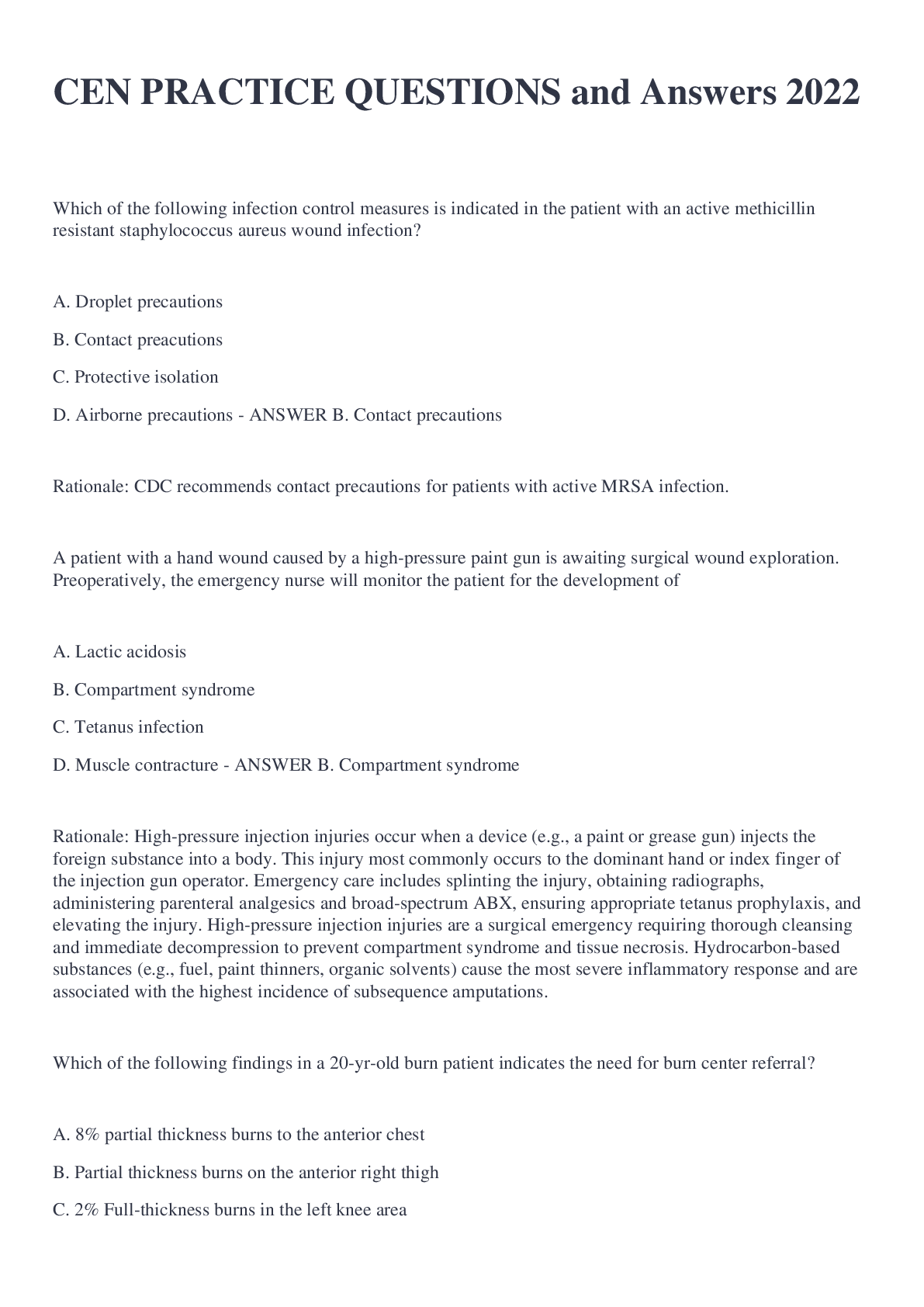
Buy this document to get the full access instantly
Instant Download Access after purchase
Add to cartInstant download
Reviews( 0 )
Document information
Connected school, study & course
About the document
Uploaded On
Aug 17, 2022
Number of pages
5
Written in
Additional information
This document has been written for:
Uploaded
Aug 17, 2022
Downloads
0
Views
75



